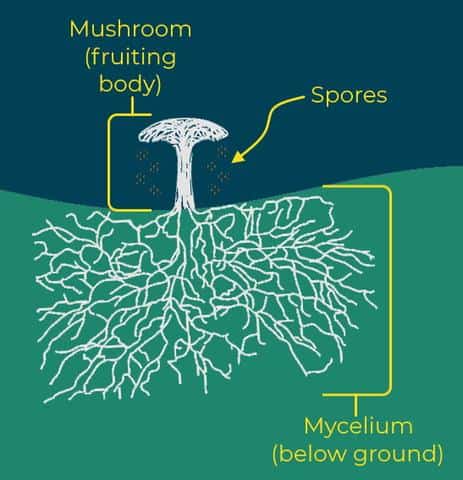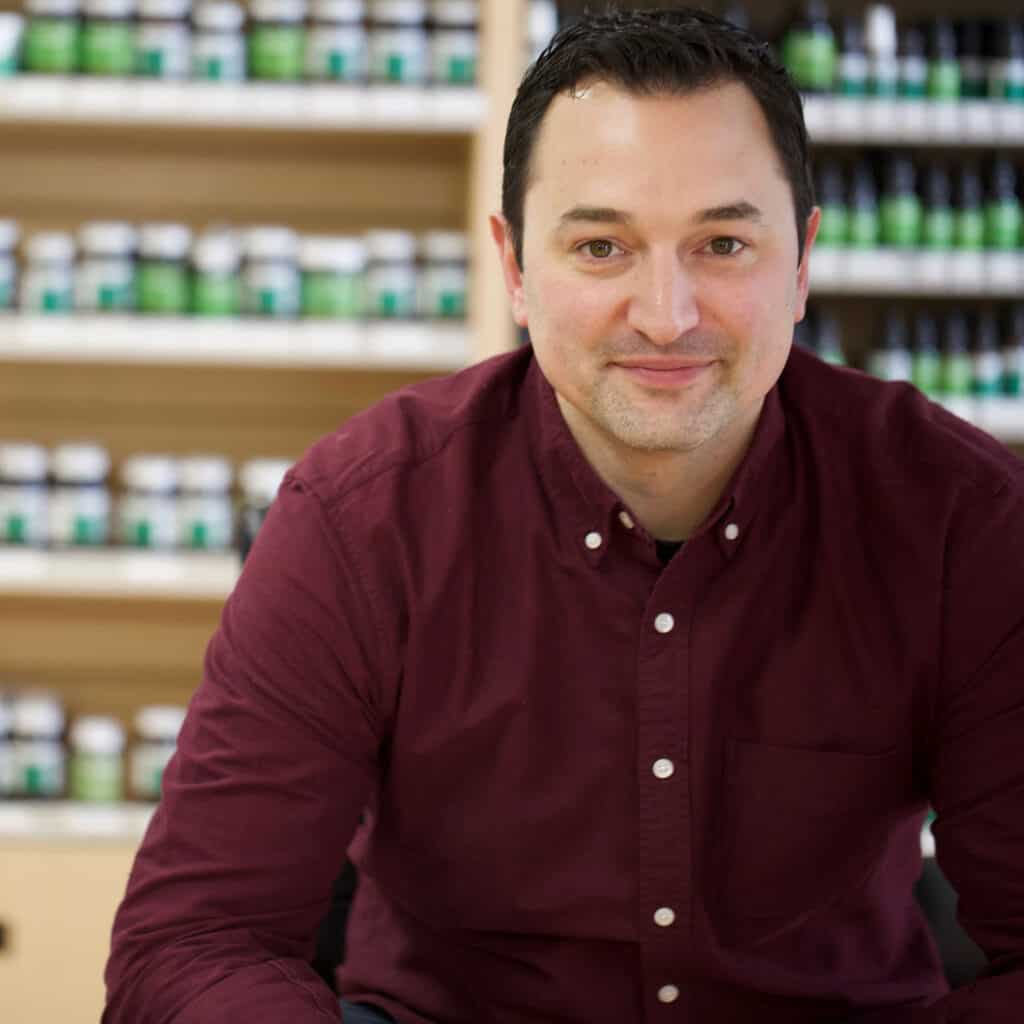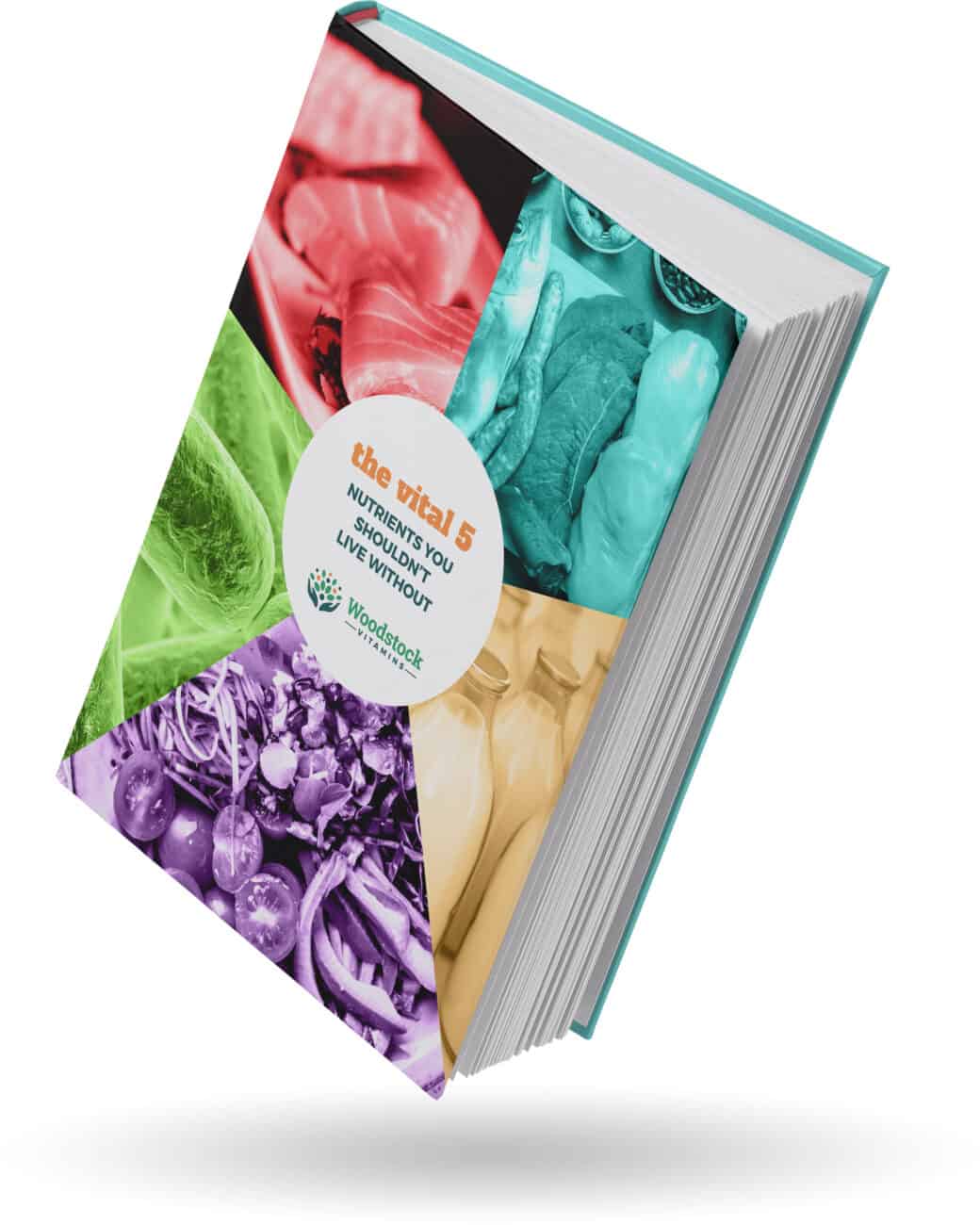To say it’s a daunting task for a guy like me to challenge each discipline within the supplement industry is the understatement of the decade.
The only way we’ll be able to do so is by surrounding ourselves with experts within each category of supplements. Someone who knows the manufacturing and quality assurance processes intimately. Someone who is as committed as we are to wellness with integrity.
I’ve been searching and I think I’ve found my mushroom guru.
I recently interviewed Real Mushrooms founder Skye Chilton for The Big Mouth Pharmacist Podcast .
It’s hard to know before the interview if someone’s going to live up to their own marketing hype. With Skye and Real Mushrooms, I feel like they actually sell themselves short a bit!
This article is a first in a series around mushroom quality, augmented greatly by the expertise of Skye and Real Mushrooms.
Mushroom Basics
There are a lot of terms kicking around that you may or may not be familiar with as it pertains to mushrooms therapy. Here are the big three:
Spore – the “seed” of a mushroom
Mycelium – the roots of a mushroom
Fruiting body – the mushroom itself
You know what they say about pictures… ‘Pictures are purtier than readin’,” or something like that…

Spores start out by growing pretty deep and wide with and stringy but at times cotton-candy like root system called mycelium. Here’s what real-life mycelium looks like:

After a while, a mushroom (or fruiting body) will grow above ground. There are names for the other parts of a mushroom- like the cap/gills/etc, but we’ll save that for another day.
Ready for the easiest concept of the day? The mycelium and the mushroom are not the same.
They don’t have the same makeup. Not like eye shadow and lipstick, but the chemical makeup of the different parts of the whole mushroom complex will vary in nutritional and biological components.
Generally, the mycelium will simply be tubes with smaller concentrations of healthful compounds, as they are transporting most up to the mushroom itself, which will then create lots of unique goodies that, you know, do stuff in humans.
All mushrooms aren’t good. In fact, most aren’t. There’s only a handful of mushrooms that won’t kill us, and some are just plain fun. The kind of fun where you trade your shoes for a grilled cheese sandwich at a Phish concert.
In the mushrooms that are good medicinally, we see interesting health benefits. Mushrooms have been used to support immune health, stress, energy levels, memory and more. They’re relatively safe, and it doesn’t take much to find good data to support their use for various health concerns. Even in patients dealing with cancer diagnoses!
It makes sense, then, that people get excited and want to try out mushrooms. I’m with you, and I recommend them whenever I can. Unfortunately, the natural products industry is great at letting us down, and they do so because it is not only more financially feasible, it’s highly profitable.
Let’s talk about the biggest lie in the mushroom industry right now…
It’s Not Yo’celium, But Mycelium
Mushrooms are cultivated by placing a growth medium into plastic bags, sterilizing it, inoculating it with spores, and then growing at the proper temperature, light, and humidity. Mushrooms grow, then the bags are open and mushrooms are harvested.
The best growth medium is wood. It’s not like the stack a bunch of logs in a corner, but instead, they use nutrient-enriched sawdust of sorts. Alternatively, you could use grains like rice. In fact, many do, but the results are not the same.
The rice-as-growth-medium method is used by mushroom growers to get lots of seeds. The mycelium, or roots, grows on the grain and creates what Skye calls an “inseparable mass.” The mycelium and grain are harvested together (because you can’t separate them) and then dried and powdered.
Ready for me to shoe-horn a joke in here? When you grow mycelium on grain, there isn’t… MUSH-ROOM for anything else!
Just like we pointed out in our Garden of Lies article, many “whole food” vitamin manufacturers are using a very loose definition of food, and often feed synthetic vitamins to yeast and refer to this as a “food.” The same goes here for mushrooms; many manufacturers sell the dried powder mycelium-grain mix as mushrooms.
As we stated clearly before, mushrooms and mycelium are different.
Myceliated grain, as the mix is called, is mostly grain. Over 70% in some official studies and documentation.
That means a mushroom product that is using myceliated grain instead of mushrooms is mostly filler. This is similar to Pet Nutrition, where some brands will use “chicken” as their main ingredient. Most of chicken is water. We want chicken meal, the properly dehydrated chicken.
Skye points out that some people are trying to avoid grains for dietary reasons, then are gobbling down a grain-rich supplement without knowing any better.
Imagine you’re paying for all of the wonder-chemicals that are found in healthy mushrooms like shiitake, reishi, or lion’s mane and all your getting is rice-root powder… That’s practically all your getting, as mycelium doesn’t have most of those compounds we’d benefit from, and if they do, they’re in very little concentrations.
“Just Eat It! It’s Good For You!”
Mushroom manufacturers use the same dirty tricks other supplement manufacturers use to try to convince you that their myceliated grain is the same, if not better, than what you intended on buying. They fudge the data.
There is data on the use of mycelium of certain mushrooms for health conditions. The thing is, this is a special type of mycelium made by a liquid fermentation process, which means it’s grown in a liquid and not on rice cakes.
Manufacturers extrapolate the good mycelium product data onto their garbage product, knowing most of us won’t skim past the surface.
We’re getting sold a bill of goods, then they’re using marketing spin to try to convince us this deception is in our best interest.
Isn’t There A Law Against This?
You would think mislabelling a product would be a top offense. Technically, it is. FDA requires proper labeling, especially of botanicals like mushrooms. In the voluntary compliance world of natural products, it’s catch me if you can.
A Consumer’s Guide To Mycelium Misinformation
Skye has compiled a list of ways you can identify if you are getting mycelium and not real mushrooms. Most of this requires evaluating some of the traits of a product you’ve already bought, but obviously it’s best not to waste your money in the first place.
- Color – myceliated grain is bland, where mushrooms are rich yellows and browns.
- US Grown – almost no mushroom extracts for supplements come from the US. This is a topic for another day, but for now, know that it isn’t economically feasible to do so. Any brand that says US grown mushrooms is lying or using myceliated grain.
- Taste – mushrooms taste like mushrooms. Some are super bitter. If you have no or bland taste, it’s probably not mushrooms. If the neutral flavor is a selling point, you’re probably not getting any active mushrooms and are probably getting “mushrooms” via myceliated grain.
- Marketing Terms – here’s a list of words used to hide (directly or indirectly) if you are not getting actual mushrooms:
- US Grown
- Mycelium
- Myceliated brown rice
- Mycelial biomass
- Organic White Milo
- Fermented
- Full spectrum
- Primordia and exocellular compounds
It should be noted that these tips can help you try to find a higher quality mushroom product, but it’s difficult even for a trained eye. I’ve noted before how difficult it is for me, the guy who has built his career on supplement quality, to not get duped.
Without an intimate knowledge of the tricks and the trade, and complete transparency, there’s a good chance you’ll never be 100% sure. It’s extremely difficult for consumers to make educated decisions about which supplements brands are deserving of trust with the information that is at their disposal.
Get That Shitake Out Of Here!
If you’ve been reading my stuff and paying attention to what I’m saying, you know we have a big point to make about supplements: the products we buy are VERY different from the ingredients we need to have a health benefit.
Because of loosey-goosey regulations, marketing hype, and a very trusting consumer, brands can sell you products that aren’t the correct form or dose of a nutrient. In the case of mushrooms, they can get away with not selling you mushrooms at all…
…as is the case with a majority of mushroom products on the market.
In many cases, the mushroom supplement you’re taking is just a mixture of roots with their growth medium, usually a grain or carb-rich rice-cake of sorts. Not only are you getting completely duped out (mushroom vs roots), mycelium have almost none of the beneficial compounds found in mushrooms.
The bottom line? They’re trying to put one over on us at every turn, so we can’t just buy supplements without really digging in and asking tough questions – even from people we trust, because so very few people know the REAL story of supplement quality.
If you don’t fully understand the point of this article yet, just wait… it needs time to grow on you. Ba-dum-tiss.
In an upcoming article, we’ll discuss how beneficial mushroom compounds probably aren’t even in your supplement, even if the manufacturer does use actual mushrooms.
Just trying to keep it real…

Neal Smoller, PharmD
Owner, Pharmacist, Big Mouth



